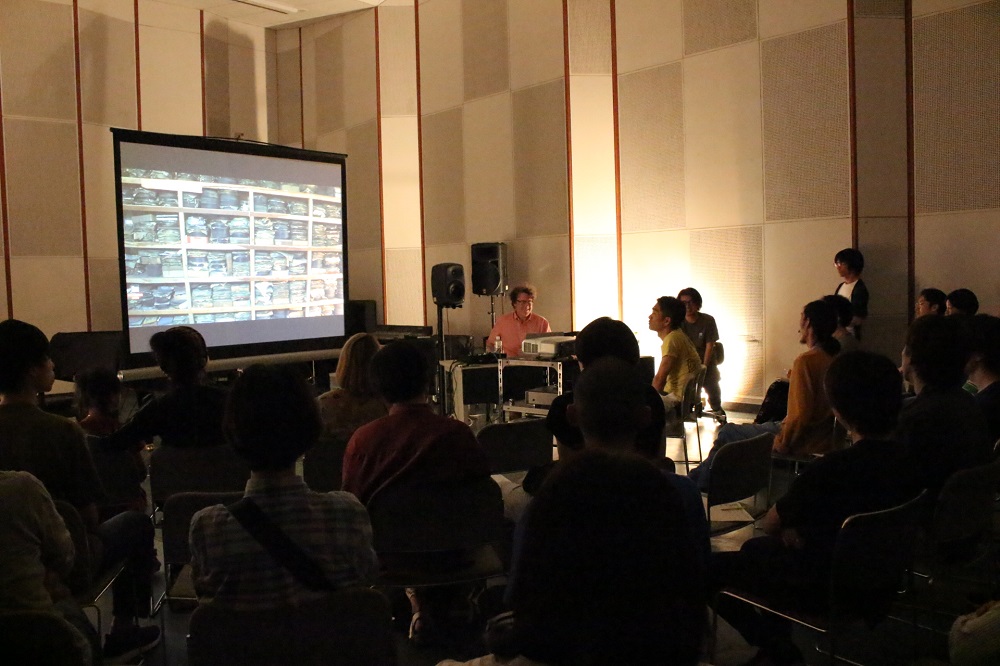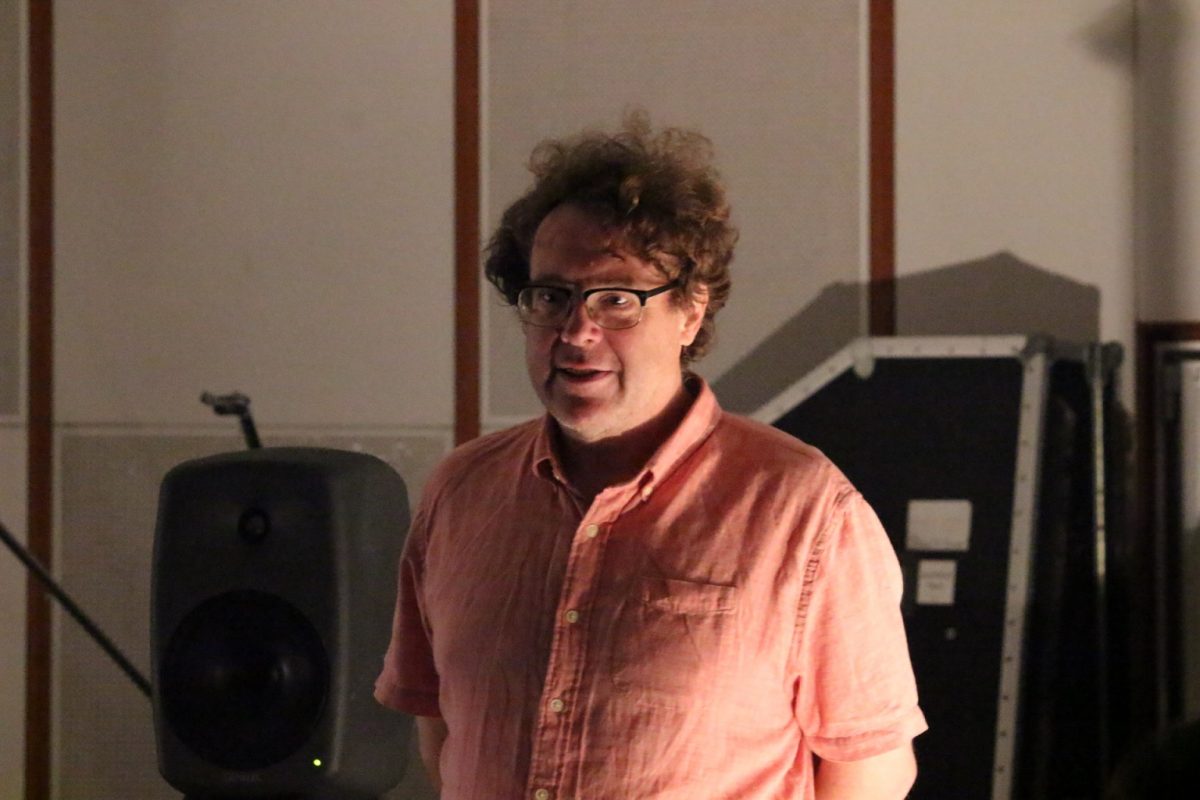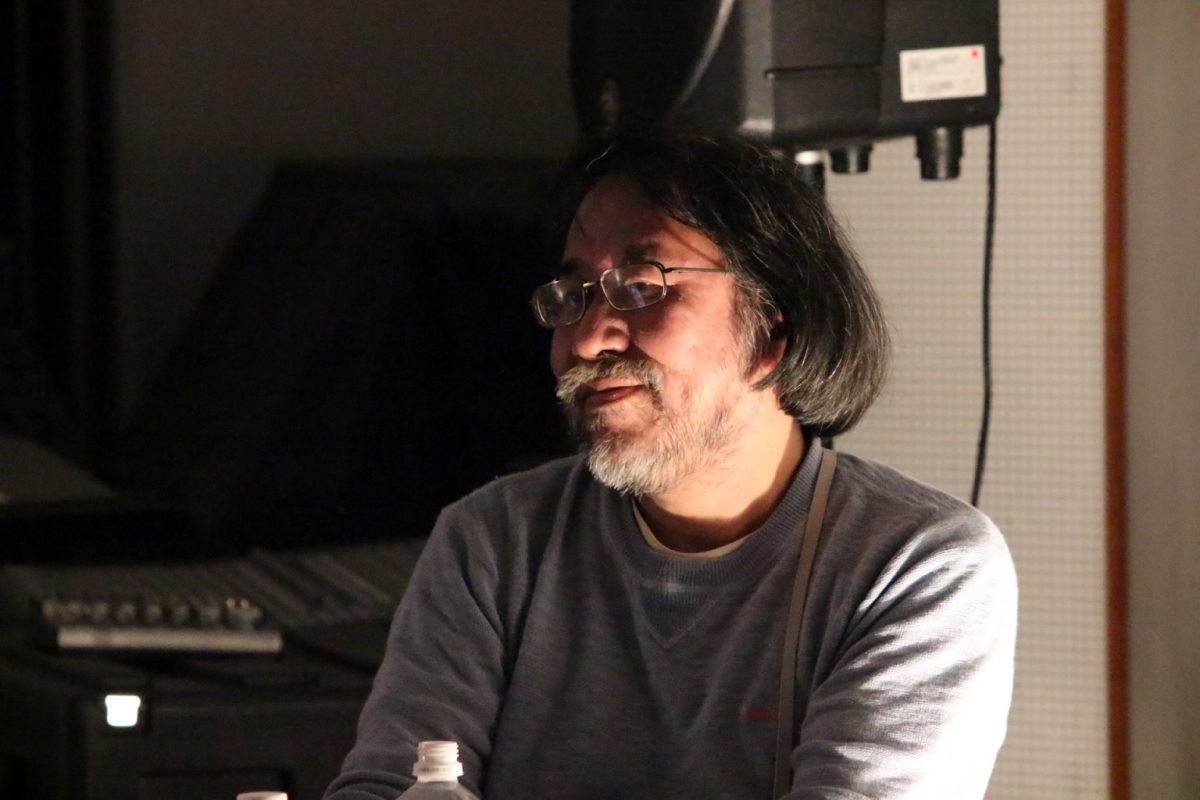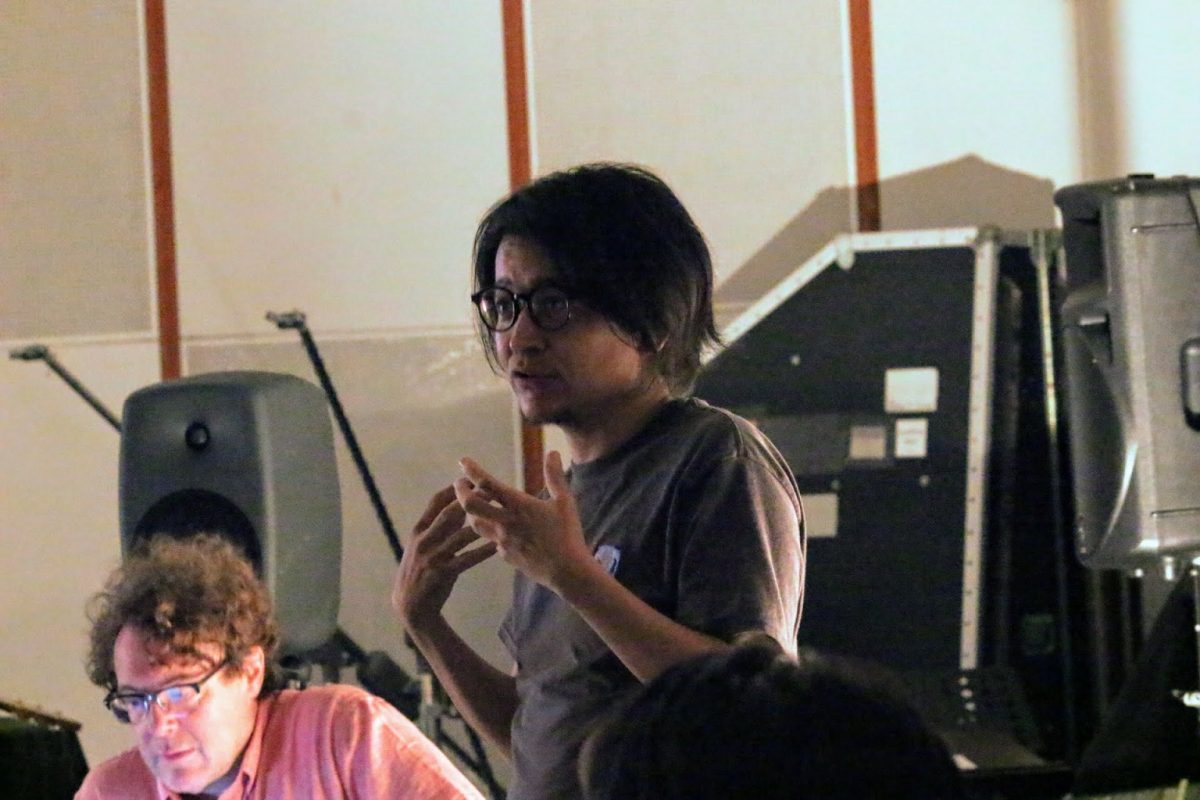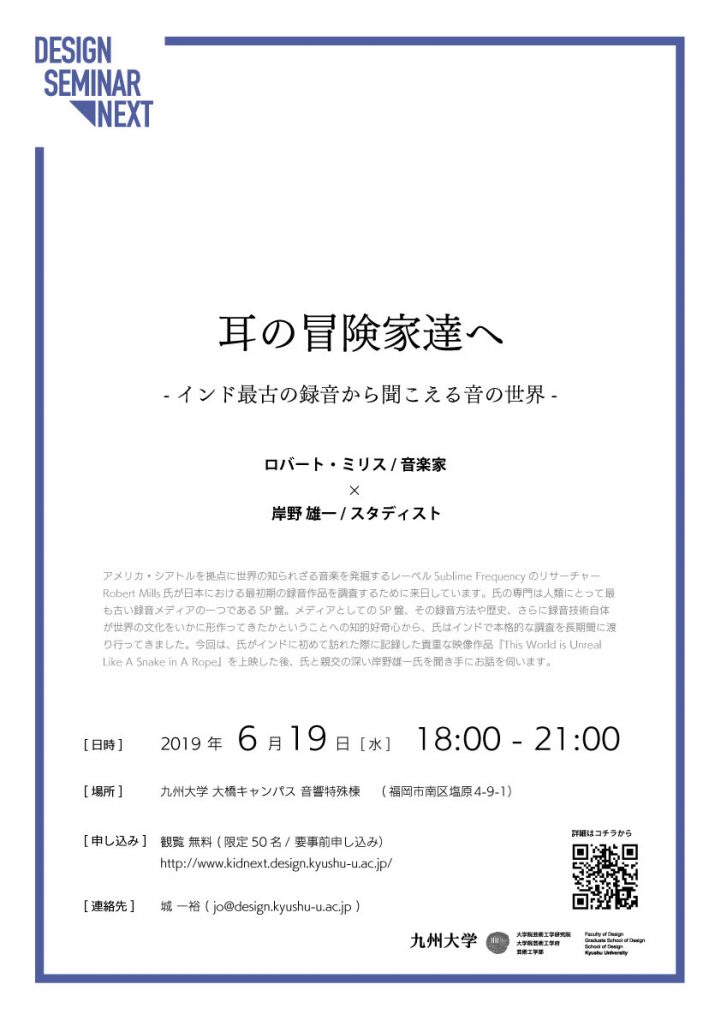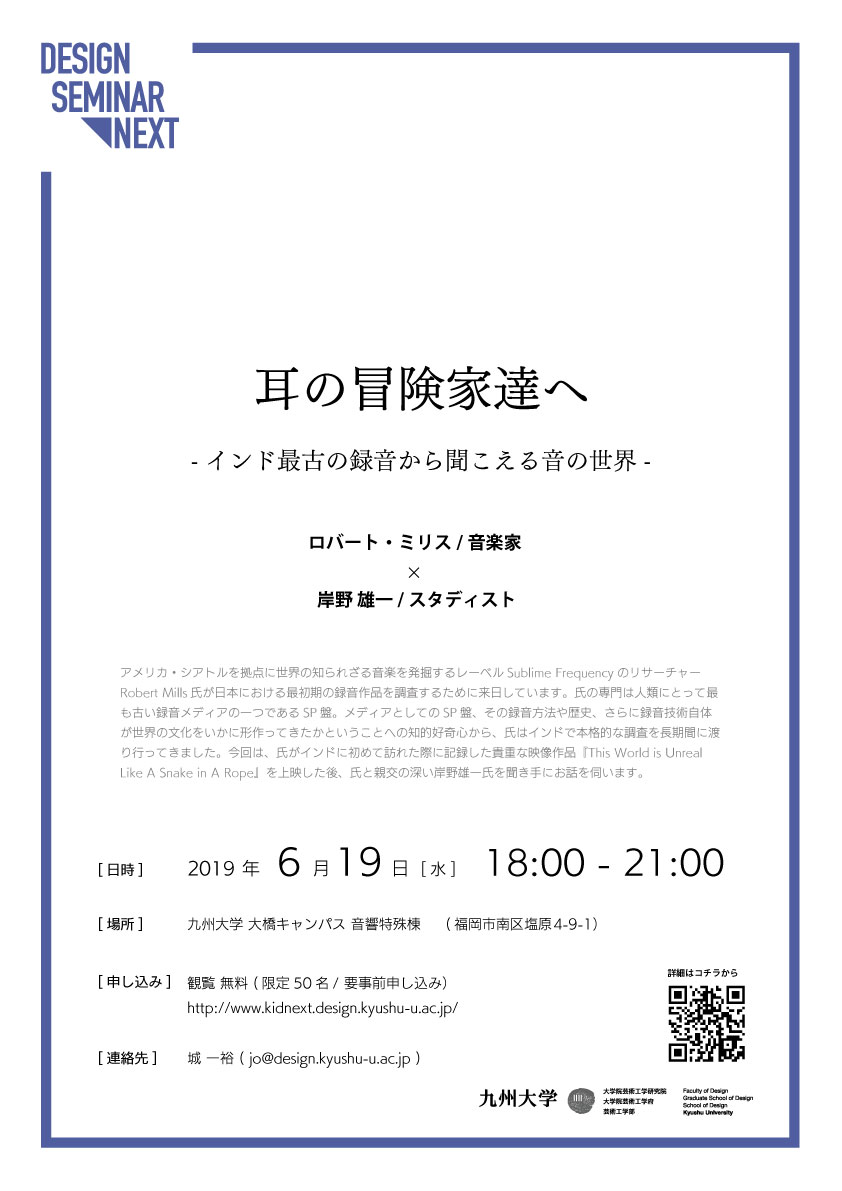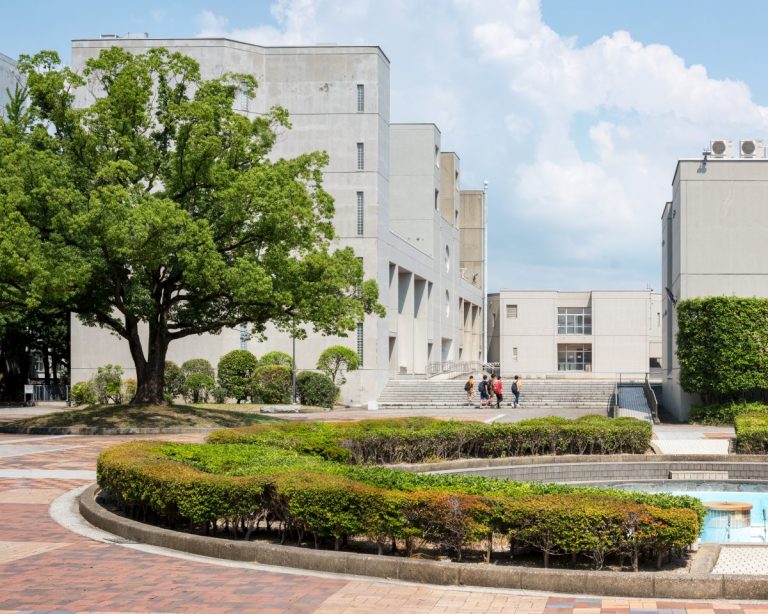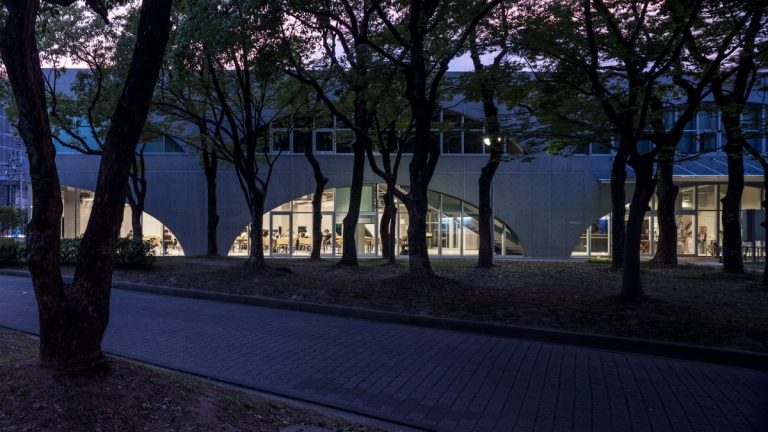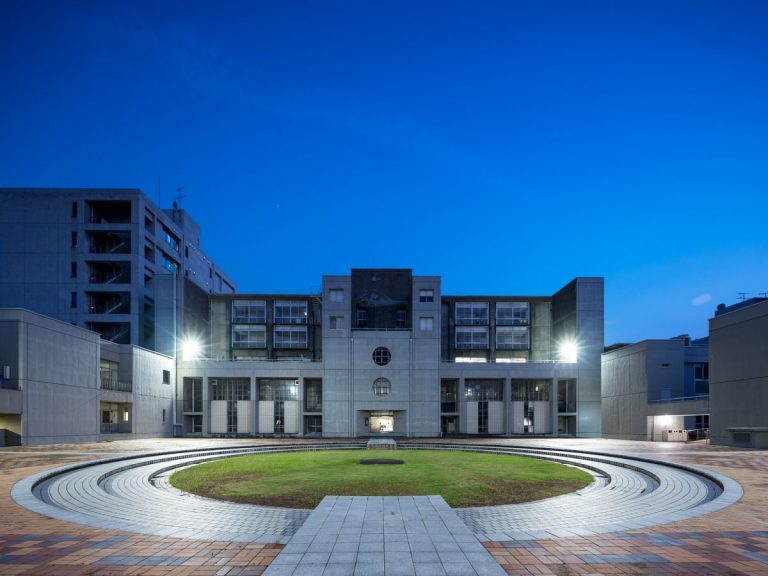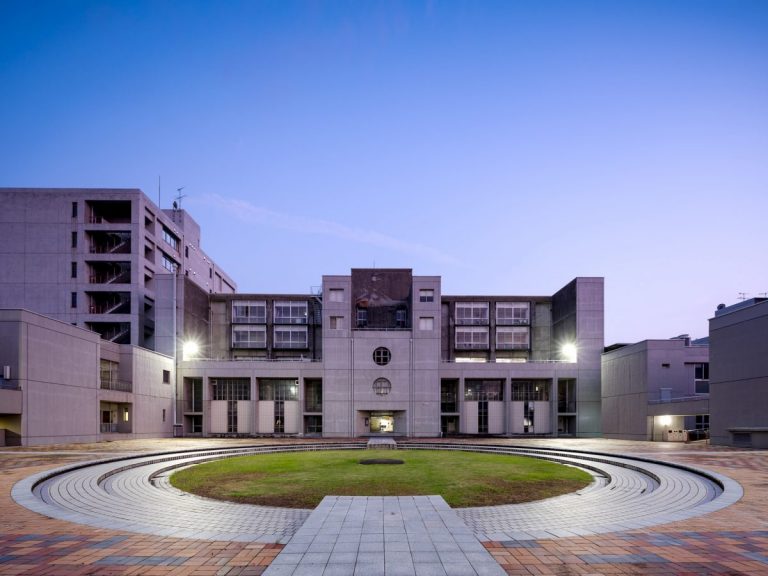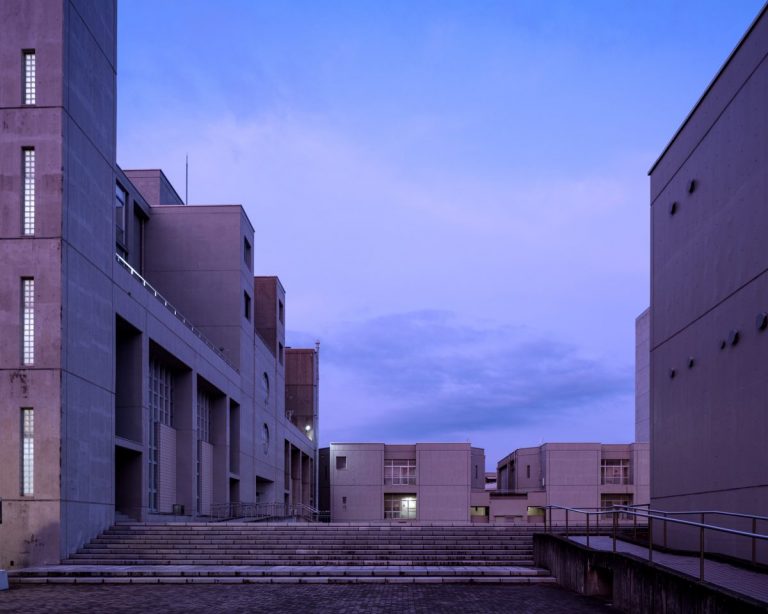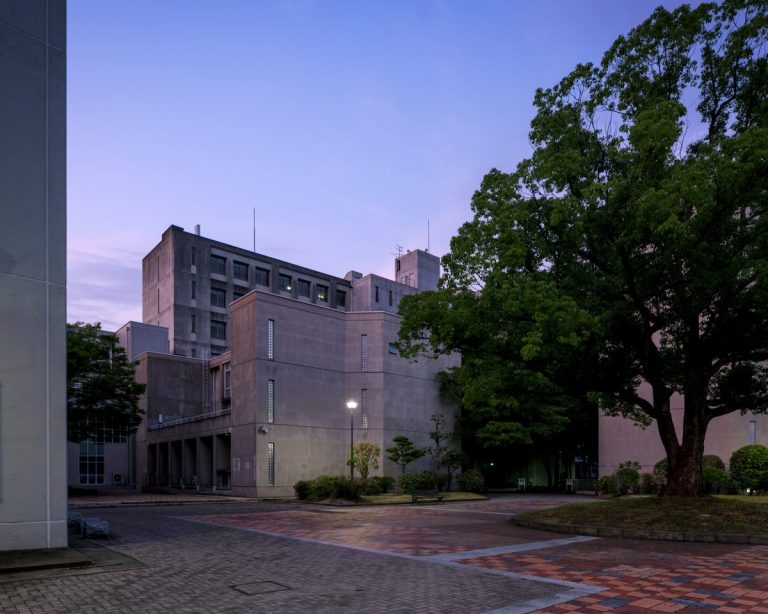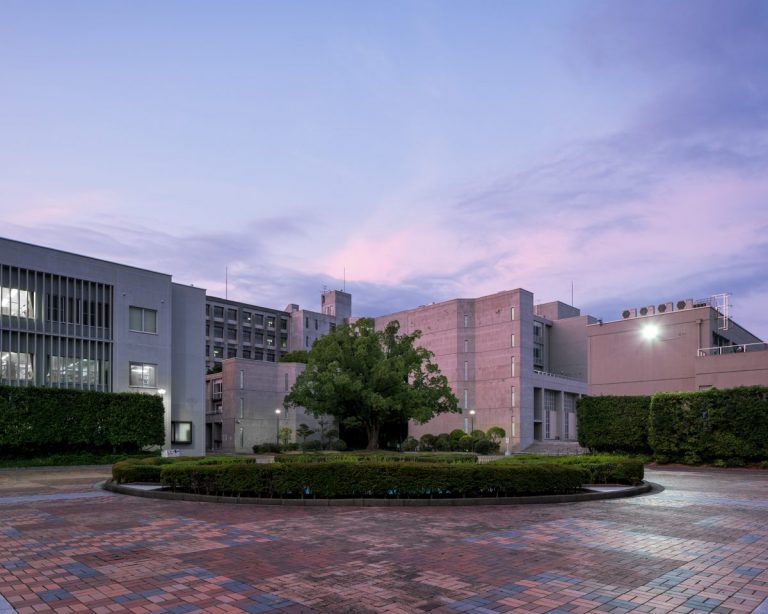Design Seminar Next: “For Audio Adventurers, Hear The World of Sound with India’s Oldest Recordings.”
June 19th, 2019
We welcomed Robert Millis, a researcher for the music label, Sublime Frequencies, and Yuichi Kishino, a scholar, involved in a wide range of endeavours, including numerous musical units, to discuss “For Audio Adventurers, Hear The World of Sound with India’s Oldest Recordings”. There were about 30 people from within the university and the general public attended the session. Tomoya Matsura, a doctoral student at the university’s Graduate School of Design, covered the day’s events.
There is no dialogue, no narration, and almost no subtitles in this one-hour video “This World is Unreal Like A Snake in A Rope”. It consisted of the sights and sounds that Mr Millis happened to encounter while wandering through the streets of India, presented in chronological order. Despite the absence of a plot or drama, taking in the many sights and sounds of the everyday bustle, the daily religious rituals and festivals, and people giving roadside instrumental performances were strangely fascinating.
In addition to using such field recordings to create music, Mr Millis has also long been interested in the origins of the practice of recording audio. It is a part of his research.
Towards the end of 19th century, the method of inscribing sound onto a disc to produce a record was discovered. Soon after, a man by the name of Frederick William Gaisberg travelled the world, recording audio ranging from songs to comedy. These became the first recordings to be traded on the market. Records from both India and Japan were included in this collection, which was one of the reasons Mr Millis made the trip to Japan.
After the screening, Mr Kishino gave detailed explanations of how audio is recorded and played back on a record. Then Mr Millis shared various historical aspects of the record, as well as some of Gaisberg’s recordings.
The earliest records, also called SP records, were made from shellac, a material created by processing a resin secreted on the surface of trees by a particular insect. As this insect’s habitat is in India, the country became a major producer of shellac. As such, India can be considered as one of the birthplaces of the record. As shellac has a variety of applications, including chemical and paints, when exports became restricted during World War 2, records were destroyed to extract the shellac. This eventually made way for the development of the LP record, which was made from polyvinyl chloride, a substance that is easier to synthesize.
Since India is a major producer of shellac, SP records continued to be produced and distributed long after the production in Japan and the West had ceased. As a result, India was one of the few countries where the Beatles SP records were produced. These eventually became ultra-valuable items traded among Beatles fanatics, and Mr Millis shared an episode of how he ended up with a fake record. We learned how something like music, which on the surface appears to be unrelated to society at large, is intertwined with everyday lives.
The understanding of the origins of audio recording allows us to think about how information can travel. Be it in the form of sound, and through mediums such as shellac, information are capable of crossing national borders and travelling through time. It brought about profound insights relating to the present day, where data is continuously circulating.
After answering some very intriguing questions posed by the audience, Mr Millis concluded the event with a 15-minute impromptu musical performance consisting of both guitar and field recording audio. It happened while the attendees were deep in conversation in front of the portable gramophones placed on the desks. No one is expecting the performance. Soon everyone was listening intently. Similar to the film, this musical performance did not contain any clearly defined story or drama. However, everyone is captivated by it, and the experience was fascinating.
Kyushu University Faculty of Design has launched Design Seminar NEXT at the start of 2019, with the intent to go beyond fundamental study to unearth new potential in the field of design. Design Seminar NEXT, together with the Study of Design Fundamentals Seminar, form the two main pillars of a new educational approach that seeks to systematize design.
Speaker
Robert Millis
Mr Millis is an important figure in the American research sector, managing Sublime Frequencies along with Alan Bishop of Sun City Girls. He specializes in the fields of standard-play record research and collection and produces music for the reformed DUST-TO-DIGITAL label. Other than his work as a musician for Climax Golden Twins, he produced many videos works as a professional artist and solo performer. He is also a filmmaker and has created many documentaries. His works included “Phi Ta Khon: Ghosts of Isan” that was based on Thailand’s Phu Ta Khon festival. Also, “This World is Unreal like a Snake in a Rope” revealing the religious practices in southern India. Mr Millis has also won Fullbright Research Award that allowed him to stay in India for a year where he released “Indian Talking Machine”. A compilation of his standard-play record investigations and collection of recordings. Also, “Paris to Calcutta: Men and Music on the Desert Road” using a wealth of recordings, following in the footsteps of Deben Bhattacharya, a folk music scholar. He has come to Japan to investigate a commercial record made some time between 1902-1903, the first of its kind in East Asia.
Yuuichi Kishino
Born in Tokyo in 1963, he took up teaching at Bigakko and The Graduate School of Film and New Media, Tokyo University of the Arts. Having completed a wide range of activities such as working with the music groups “Hige no Miboujin” and “Watts Towers”, he earned the title of “Studyist” (Good Learner). He constantly creates innovative DJ event locations, such as at public baths, convenience stores or venues at the Bon Festival. In 2015, he was awarded the Japan Agency for Cultural Affairs Japan Media Arts Festival grand price for “How to Count Correctly”. In 2017, he was the artistic director for “Totto Shopping District” at the Sapporo Snow Festival and Sapporo International Art Festival.
Organizer
Kyushu University Faculty of Design
Date
Jun 19th, 2019 (Wednesday): 6:00 p.m.-9:00 p.m.
Venue
Recording Studio, 1st Floor Acoustics Research Center, Kyushu University Ohashi Campus
4-9-1 Shiobaru, Minami-ku, Fukuoka
Contact
Kazuhiro Jo(Kyushu University Faculty of Design)
jo(a)design.kyushu-u.ac.jp
![九州大学イノベーションデザインネクスト[KID NEXT]](https://www.kidnext.design.kyushu-u.ac.jp/wp-content/themes/kidnext/img/logo_header.png)
